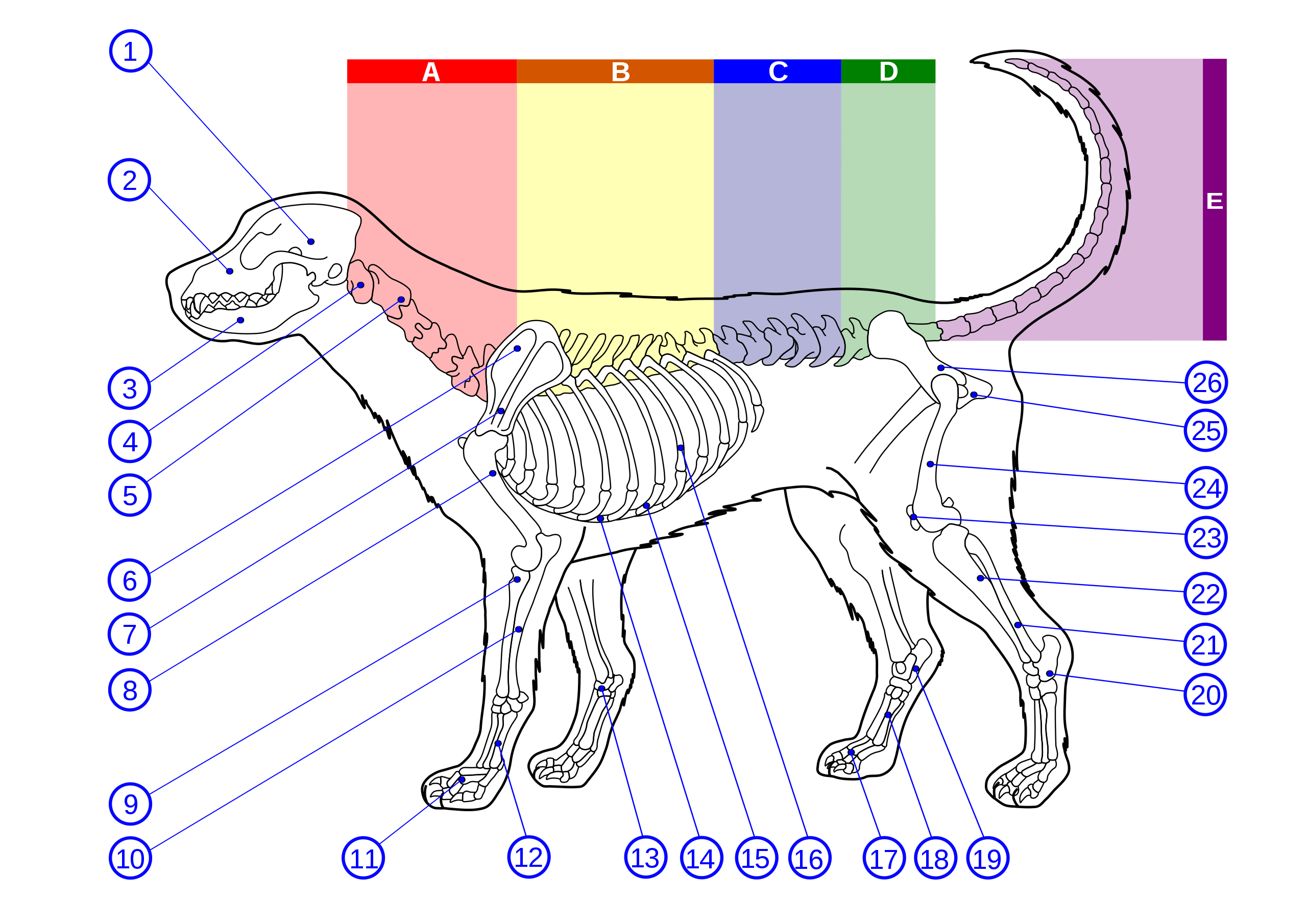How Many Bones in a Dog? Exploring Canine Skeletal Structure
When it comes to our furry companions, dogs have always intrigued us with their fascinating anatomy. One of the common questions that arise is, "How many bones are there in a dog's body?" In this article, we will delve into the intricate world of canine skeletal structure and provide a comprehensive answer to this intriguing query.
I. The Basics of Canine Skeletal System:

The Basics of Canine Skeletal System
The skeletal system forms the foundation of an animal's body, providing support, protection, and enabling movement. Just like in humans, a dog's skeleton consists of various bones that come together to create a remarkable framework.
II. Types of Bones in a Dog's Body:

Types of Bones in a Dog's Body
Dog bones can be classified into different types based on their shapes and functions:
Long Bones: These bones are typically longer than they are wide and are crucial for movement. Examples include the femur, humerus, and radius.
Short Bones: Short bones are more cuboidal in shape and provide stability and support. The carpal and tarsal bones fall under this category.
Flat Bones: These bones are thin, flat, and often serve as protective shields for vital organs. The scapula and pelvis are examples of flat bones.
Irregular Bones: Irregular bones have unique shapes that don't fit into the other categories. The vertebrae and facial bones are prime examples.
III. Canine Skeletal Anatomy in Numbers:
To answer the question "How many bones in a dog?" let's break down the numbers by sections:
Skull and Head:
Cranium: 1 bone
Mandible (Lower Jaw): 1 bone
Total: 2 bones
Vertebral Column:
Cervical Vertebrae (Neck): Varies by breed, typically 7 bones
Thoracic Vertebrae (Chest): Varies by breed, typically 13 bones
Lumbar Vertebrae (Lower Back): Varies by breed, typically 7 bones
Sacral Vertebrae (Pelvic): Varies by breed, typically 3 bones
Caudal Vertebrae (Tail): Varies by breed, typically 20-23 bones
Total: Varies, but around 50-60 bones
Thoracic Cage:
Ribs: Varies by breed, typically 13 pairs
Sternum (Breastbone): 1 bone
Total: Varies, but around 26-28 bones
Forelimbs:
Scapula (Shoulder Blade): 2 bones
Humerus (Upper Arm): 2 bones
Radius and Ulna (Forearm): 4 bones
Carpal Bones (Wrist): Varies, typically 8 bones
Metacarpal Bones (Paw): Varies, typically 5 bones
Phalanges (Finger-like Bones): Varies, typically 14-20 bones
Total: Varies, but around 35-40 bones
Hind Limbs:
Pelvic Bones: Varies by breed, typically 3 bones on each side
Femur (Thigh Bone): 2 bones
Patella (Kneecap): 2 bones
Tibia and Fibula (Shin and Lower Leg): 4 bones
Tarsal Bones (Ankle): Varies, typically 8 bones
Metatarsal Bones (Paw): Varies, typically 5 bones
Phalanges: Varies, typically 14-20 bones
Total: Varies, but around 40-44 bones
In conclusion, the number of bones in a dog's body varies based on factors such as breed and size. On average, a dog's skeleton comprises around 230 to 320 bones. This intricate framework not only gives dogs their distinct shape and agility but also provides a glimpse into the marvels of nature's design. Next time you play fetch with your canine companion, remember the complex structure that enables their playful movements.